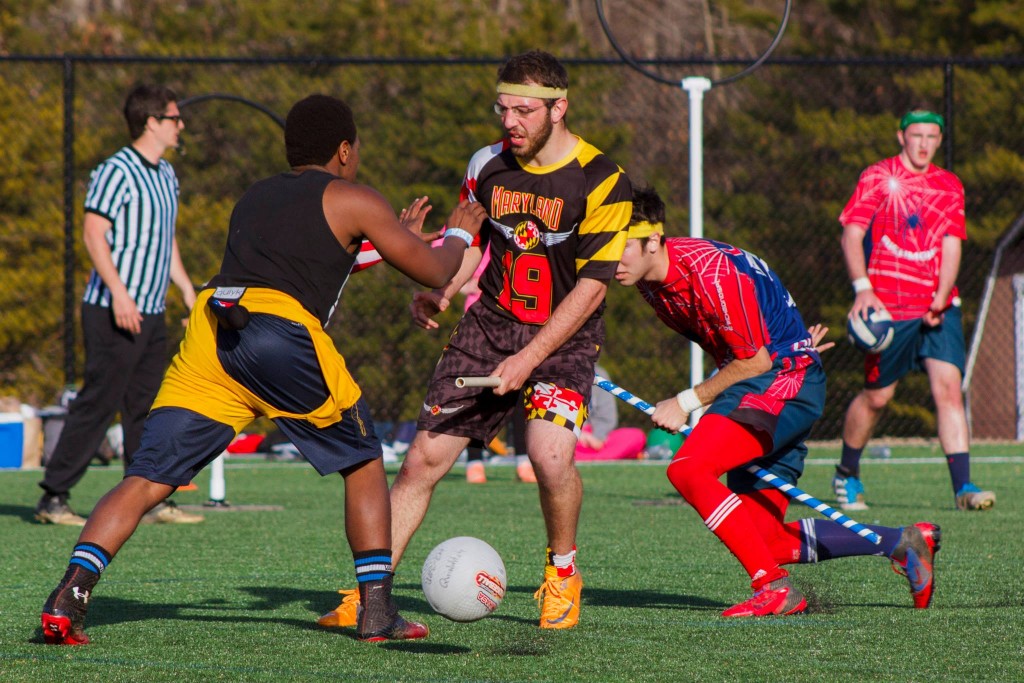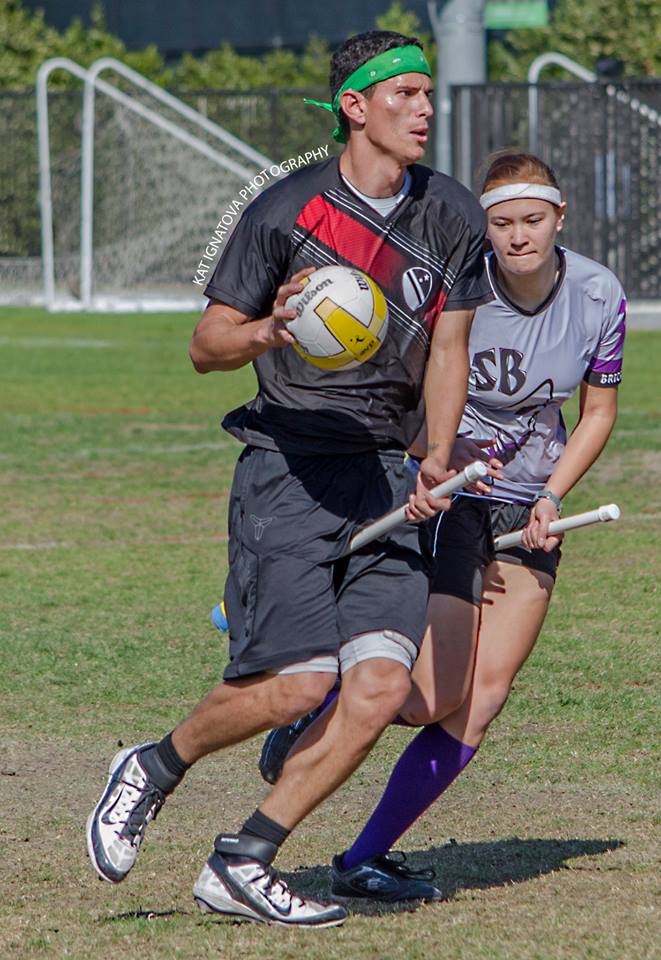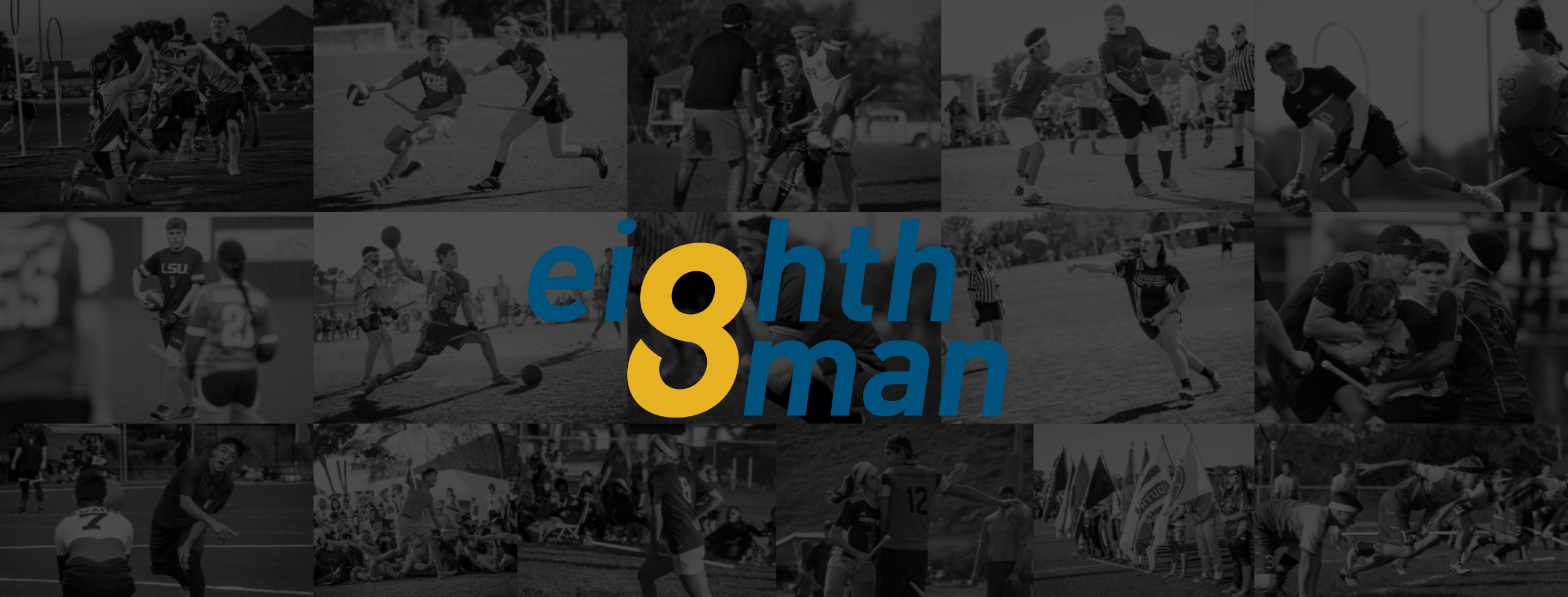- Rule, Britannia, no more?
- Unpopular Opinions: US Quadball Cup 2023
- Proven Contenders: University of Virginia
- Proven Contenders: Rutgers University
- Proven Contenders: University of Michigan
- Proven Contenders: Creighton University
- Different Perspectives: A Look Inside USA Ultimate
- Antwerp QC, Much of Belgian Core, Leaves Competitive Quidditch
Fantasy Quidditch Draft Guide
- Updated: May 24, 2014
It’s been almost two years since I wrote my original “opus” on quidditch fantasy drafting. Since then, I’ve had a few more successes at the draft table, but I’ve also had a few failures. Hey, sometimes everything goes right, sometimes your 280 galleon seeker starts throwing up after the first match.
Regardless of my personal performances, it’s become clear that some of the content of that piece has become outdated. Remember, it was written in a world where Middlebury still ruled as champions and the seeker floor didn’t exist. We’ve come a long way since then.
But now, with the summer fantasy season entering full swing this week with the draft for Midwest Fantasy, the first of the four majors, happening tonight, followed by the draft for Canada Fantasy, the biggest non-major tournament, on Wednesday, it seemed as good of time as any to revisit it.
Last time, I wrote the strategy into one comprehensive article, so it was less a guide and more of an information dump. This time around, we’re going for straightforward. Here are your five steps for succeeding in a quidditch fantasy draft.
1. It’s a Man’s World (in the early rounds)
Before I get into my first point, I need to explain the central premise of what we’re looking for here. There are certain things you need to win a fantasy draft, and if you don’t at least have all of them checked off at a competent level, it’s not going to happen. You need a ball handler, a point defender, a strong beater game, and a seeker capable of going on a run of grabs in bracket play. Every other skill you can draft for your team is easily collectible in later rounds and is a waste to spend early picks on, especially when these four skills are in limited quantities.
So, that brings us back to only picking male players early – or only spending large sums of money on male players in auction drafts. We’ll start with the issue with female chasers. In my last post, I showed data that elite female chasers have the least correlation with a strong fantasy team of any position. Two years later, this hasn’t changed. Even the very best, Team USA female chasers are very much two-trick ponies: They can catch and release near the hoops, and they can defend off-ball. Some of them dabble in ball handling or point defending, but none are the primary player at either position for their respective teams, and none are elite seekers.
In the first round of a fantasy draft, it might be really tempting to take that big name female chaser. Becca DuPont, for example, is going to be available in the Midwest Fantasy draft tonight, and arguments can be made that she’s the best female chaser in the game today. But by drafting her early, you’re using your first round pick without checking off any of the four main areas we’ve determined are necessary for winning a fantasy tournament. Unless you’re considering going all in on some kind of two-male beater plan that requires a really incredible female chaser, it’s simply not worth it.
The female beater, on the other hand, is a bit more complex. Two years ago, I had it as one of the best elite positions to get on your team, with a strong correlation to producing a high winning percentage. But my reasoning for that was, “when comparing these numbers to those found in the female chaser section, it’s clear that having a talented female beater is much more important to team success. Yet, many teams continue to train their most athletic females to be chasers.”
In other words, the reason for drafting a female beater early wasn’t that they’d have a giant effect on the quaffle or snitch game, but simply that the early round athletic female beaters were so much better than the late round unathletic ones, which teams used to stash at beater, that having one just gave you a huge edge in the beating game. Now, almost every female beater at the upper levels of the game is athletic, and you can find plenty of value in the late rounds of a draft – Ricky Nelson bought Richmond’s Julia Baer for 14 galleons in last year’s Northeast fantasy draft – without wasting an early pick.
2. Staying on Point
This is going to use very much the same themes as the first, but draw a slightly different conclusion. In extremely simplified terms, there are generally two types of offensive quaffle players in quidditch, and three types of defensive ones. The offensive ones are ball handlers or wingers, and the defensive ones are point defenders, off-ball defenders and keepers.
Of these five, three are easily replaceable late in a draft. Just about anyone can keep at a decent level if they position themselves right and play the angles, even if they aren’t 6-foot-5. Off-ball defenders literally just need to have decent quickness and the willingness to put in the effort, and effort can be found all the way down to the last round of a draft. And wings just need to be able to cut and catch, but honestly, most teams in fantasy aren’t running much more than a two-man offense – two quaffle players working off of each other – so you can bury a lot of your weaker players at wing without it even being a problem.
Which leaves us with point defenders and ball handlers. I think both are fairly self-explanatory in their importance. There are top 20 teams that barely have one good ball handler, the position is truly at a premium, and in a world where your chaser and beater defense aren’t going to be perfectly in sync and a lot of the game will be happening in transition, you need that point defender that’s going to take away two or three goals a game in bludgerless situations. That value adds up quickly.
But, I will say the importance of having an elite point defender varies a little bit depending on region. It’s much easier to pick up a point defender late in the Southwest than it is in say the Northeast. Regardless, when drafting quaffle players early, these are the two attributes you are looking for. If you can get both in a single player, that’s even better. But wasting an early pick on an off-ball defending winger is a recipe for disaster.
3. Oh Say Can You Seek

The added utility Harry Greenhouse brings makes him a more attractive attractive option than a pure seeker. Credit: Dani Palmer
I don’t care how good your team is at the other six spots on the field. Honestly, it could be the best fantasy team ever assembled, and it wouldn’t matter if you didn’t draft at least one player to serve as your primary seeker, because somewhere in bracket play someone is going to keep you in range and just like that your fantasy dreams – repetitive, I know – will be gone.
Two years ago, seekers ran the roost, and spending huge amounts of your budget or a first-round pick on a pure seeker was not just acceptable but almost a requirement for winning fantasy tournaments. That summer, Miami’s David Moyer won Midwest Fantasy after being picked in the first round, while NYDC’s Billy Greco – then still at Villanova – won Northeast Fantasy as one of the five highest cost players.
Now, things have changed a bit. At the top of the seeker ranks, there really isn’t a clear hierarchy anymore, and when two really strong seekers go up against each other, it can often be a coin flip. This doesn’t mean you can ignore the position entirely, a coin flip is still much better than automatically losing, but it changes what you are looking for. Rather than making sure you have the single best seeker at the tournament, you want the strong seeker that gets you the most value.
There are two ways to accrue value with your seeker selection. The first is simply to wait as long as you can or to spend as little as you can on a seeker that is still in those upper tiers. One could argue that Greco is a better seeker than his NYDC teammate Freddy Varone, but if I can get Varone for 100 galleons cheaper, when the difference in skill is rarely large enough for it to matter much, I got the much better deal.
The other way to get value is to pick a seeker that has utility at other positions, a choice that has only gotten more promising over time with the implementation of a seeker floor and the likely elimination of off-pitch seeking entirely. Harry Greenhouse, for example, is an upper-tier seeker, but he’s also an elite point defender and can ball handle. If you’re paying the same for him as you are a pure seeker, you’re getting much more for your money.
4. A Quick Word on Beaters
While I haven’t spoken much about them so far, beaters remain one of the most important parts of a strong fantasy team, as they were two years ago, and not having an elite or at least very good beater pairing will prevent you winning a fantasy tournament. But we currently live in a world where the upper tiers of male beating especially are very flat and wide, with many players of similar skill levels. So you don’t have to go out and get the single best – unless the fantasy tournament you’re drafting in has a real shortage, which I don’t think any of the four majors will – but make sure you at least wind up with one or two, or it’s going to be a long day of uphill battles against teams with bludger control.
5. Bury Your Depth

If you’re going to spend much of your budget on an elite player like Tony Rodriguez, you want to maximize his playtime without keeping others on the bench all tournament. Credit: Kat Ignatova
Obviously, in a fantasy tournament setting, it’s important to get everyone playing time. You’re not going to play your 300 galleon elite keeper the entire game and leave his backup, who paid and travelled for the chance to have a good time, stuck sitting on the bench. But by managing your late picks correctly, you can maximize your best players’ time while keeping everyone happy.
Let’s go back to the example, and say that you just spent 300 galleons on the Lost Boys’ Tony Rodriguez to start the draft. You’ve picked up a few solid male chasers and beaters, but following the first point in this guide, you’ve put off drafting a female chaser, and when you finally get around to it, you just end up throwing 20 galleons at an average or below average player.
Now, it’s time to start filling up your bench. If you’re setting up your average team build, you’re going to end up with three keepers and three female chasers, and Rodriguez isn’t going to be able to play enough to justify his 300-galleon cost. But if you grab a bunch of female chasers at the end and just one backup keeper, you can now maximize Rodriguez’s time while just cycling through three or four female chasers of similar skill that will now all be able to get playing time without affecting the bottom line.
This is even more important in the beating positions. Sure, Rodriguez is important, but when you need to sub him out, you simply sub in your best ball-handling chaser and minimize the loss of his impact. But in the beating game, you can’t balance out the drop off in skill from subbing out your best player, which can lead rapidly to a loss of bludger control and the crumbling of your defense. If you spent a lot on a truly great beater, don’t get him two subs. One is more than enough.
Wrapping It Up
Two years ago, I closed my article by saying that “it’s the guys and girls holding the dodgeballs that have the power…and, a hot seeker is key.” None of this has changed, though as explained above, the way you should go about acquiring these assets has. But the biggest change in the past two years is that passing has become an integral part of top-level quidditch – remember the seamless passing of WCVI Texas was still seven months away when that article was published – so having a quaffle player that can ball-handle for you is much more important than it was. And, now that they exist, elite point defenders also can be worth 40-50 points in a game.
So don’t get sidetracked when drafting. You need a ball handler, a point defender, a good beating game, and a strong seeker. Four keys for winning at fantasy; Everything else is superfluous.

3 Comments